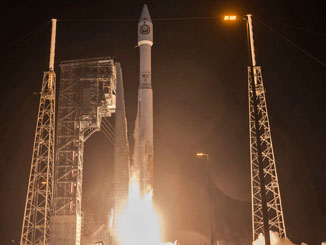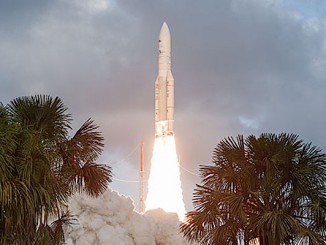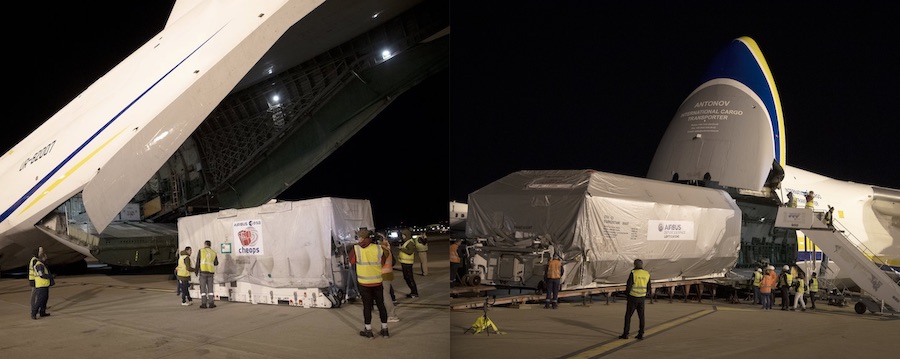
A European-built communications satellite, manufactured in secret for the Egyptian government, joined a European Space Agency exoplanet observatory aboard a Ukrainian Antonov An-124 cargo plane for a trans-Atlantic flight Wednesday to begin final launch preparations in French Guiana.
The TIBA 1 communications satellite and ESA’s Characterizing Exoplanet Satellite, or CHEOPS, were loaded into the Antonov cargo plane at Toulouse-Blagnac airport in France, near an Airbus spacecraft factory.
The heavy-duty aircraft transported the satellites — both inside climate-controlled shipping containers — on a trans-Atlantic journey to the airport in Cayenne, French Guiana, where they landed Wednesday afternoon. The two spacecraft were expected to travel by truck to the nearby Guiana Space Center in Kourou, where technicians will remove the satellites from their containers and prepare them for launch.
The TIBA 1 spacecraft will launch in tandem with an Inmarsat mobile communications satellite on an Ariane 5 rocket set for liftoff Nov. 22. CHEOPS will launch as a secondary payload on the Dec. 17 launch of a Russian Soyuz booster with Italy’s first COSMO-SkyMed Second Generation, or CSG 1, radar surveillance satellite.
Egypt ordered the TIBA 1 communications satellite in 2016 as part of a purchase of French military equipment reportedly worth more than $1 billion. French officials released no updates on the Egyptian satellite since 2016, and its name and assignment to the November Ariane 5 launch remained secret until Wednesday.
Airbus Defense and Space and Thales Alenia Space, rivals in the satellite manufacturing industry, collaborated on the TIBA 1 project. In a statement, Airbus said it supplied the Eurostar E3000 satellite platform, assembled the spacecraft, and tested the satellite.
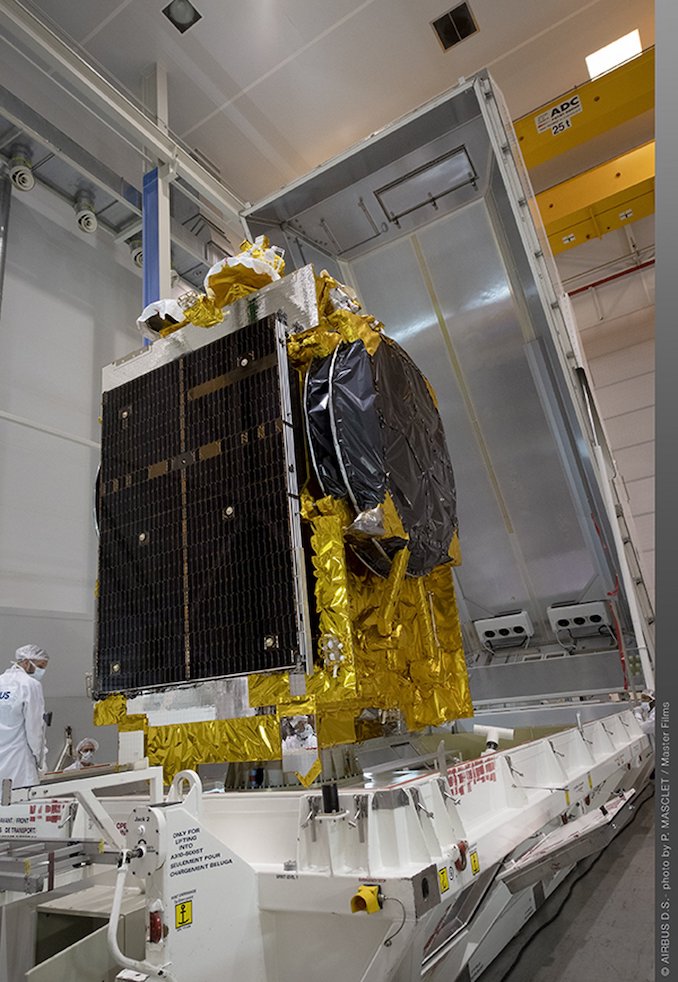
Airbus described Thales Alenia Space as the “leading partner” on the mission. Thales Alenia Space designed and built the spacecraft’s payload, Airbus said, featuring a dual-mission Ka-band package for secure and broadband communications.
TIBA 1 is designed for mission in geostationary orbit lasting more than 15 years, and will weigh around 5.6 metric tons — or 12,345 pounds — fully fueled for launch, Airbus said.
The Ariane 5 launch set for Nov. 22 will be the 250th flight of the Ariane rocket family since 1979.
A Soyuz mission will follow the Ariane 5 flight to close out this year’s schedule for Arianespace, the French launch service provider responsible for launch operations at the European-run Guiana Space Center in South America.
Set for liftoff at 0854 GMT (3:54 a.m. EST; 5:54 a.m. French Guiana time) on Dec. 17, the Soyuz rocket and its Fregat upper stage will carry the CSG 1 radar satellite, CHEOPS, and five CubeSats into a polar sun-synchronous orbit.
Developed in partnership between ESA and the Swiss Space Office, CHEOPS hosts a relatively small 12-inch (30-centimeter) telescope designed to help astronomers measure the sizes of planets orbiting other stars.
CHEOPS will detect dips in light coming from other stars caused by already-known transiting planets. It’s a follow-up to space telescopes like NASA’s Kepler observatory and the French space agency’s CoRoT mission.
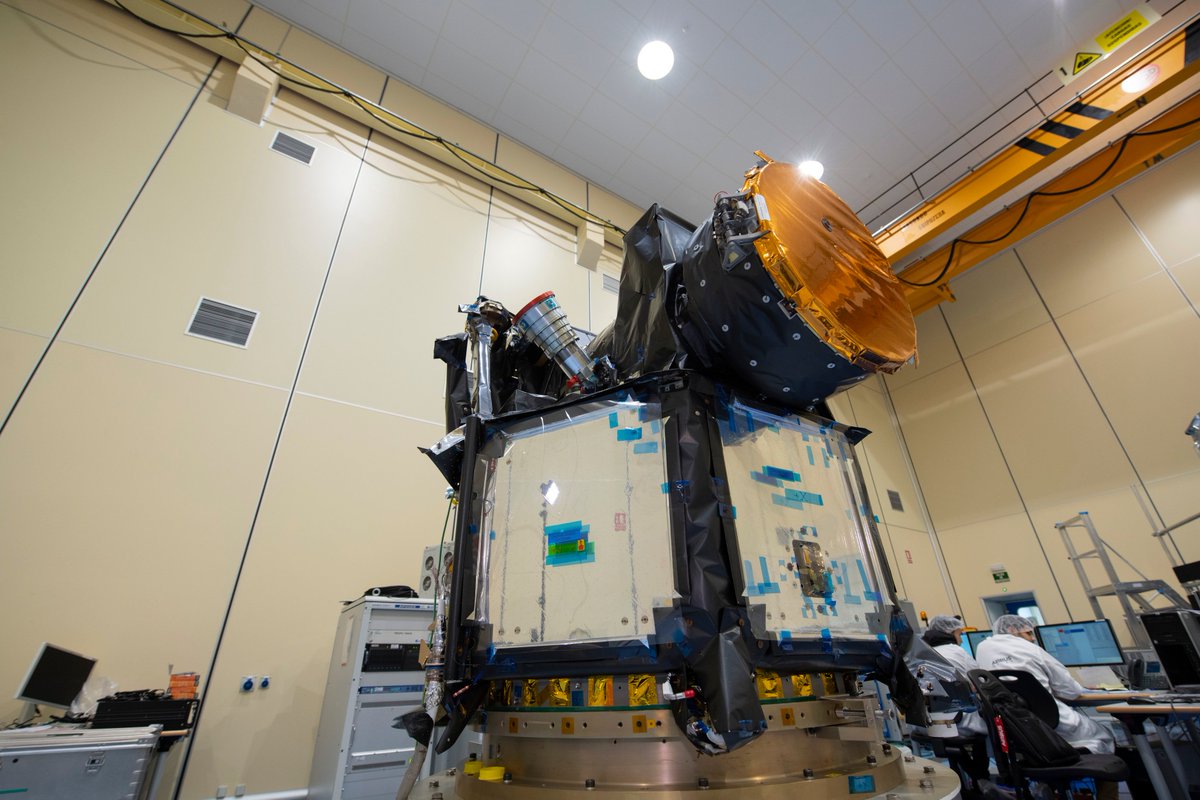
“The idea is that we know now several thousands of these exoplanets,” said Willy Benz, CHEOPS principal investigator from the University of Bern. “We are more interested slowly toward characterizing them with precision, knowing what they’re made of and their temperature, and so on and so forth.”
CHEOPS was assembled at an Airbus facility in Spain and will weigh around 640 pounds (about 290 kilograms) when it lifts off aboard the Soyuz booster.
Email the author.
Follow Stephen Clark on Twitter: @StephenClark1.

